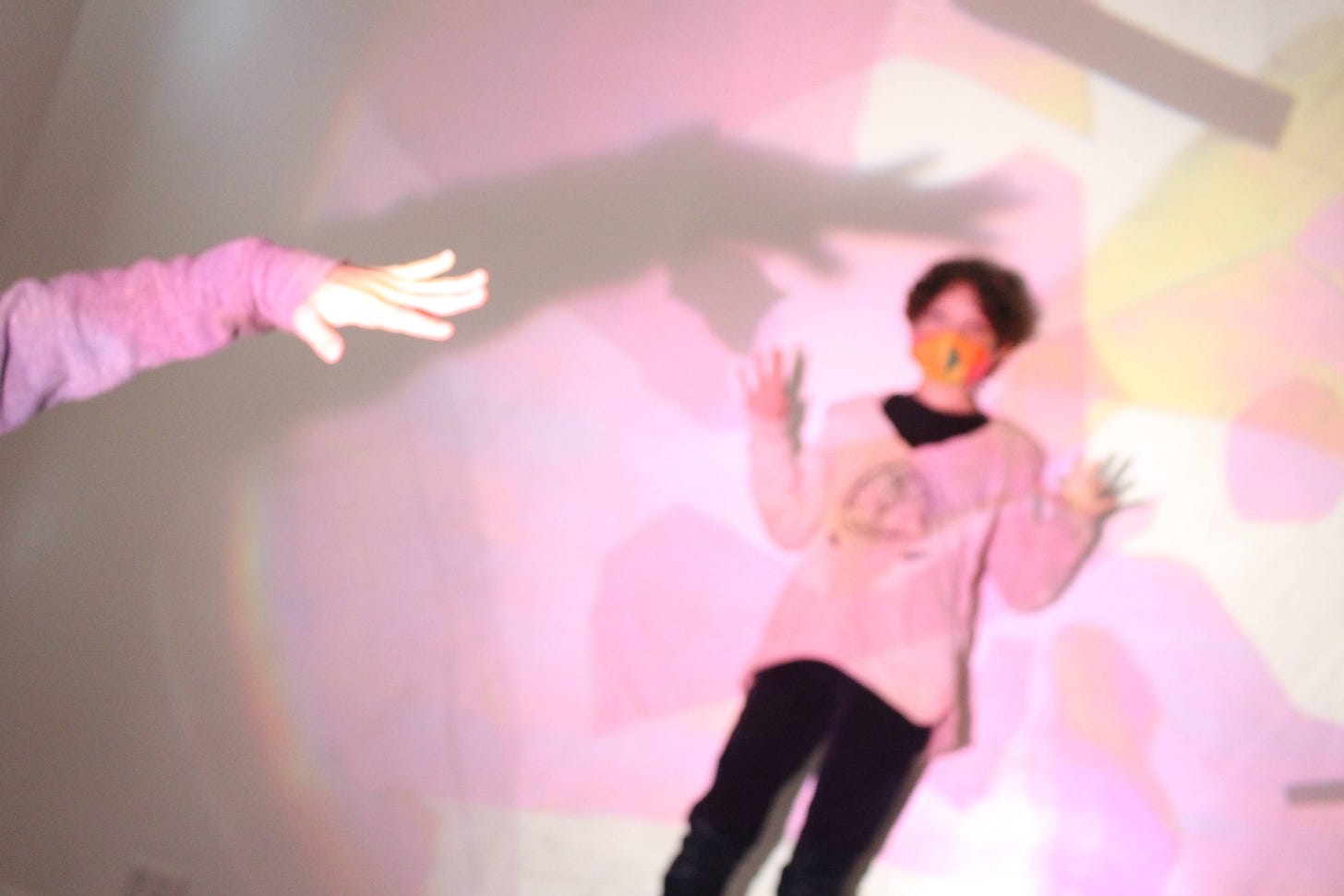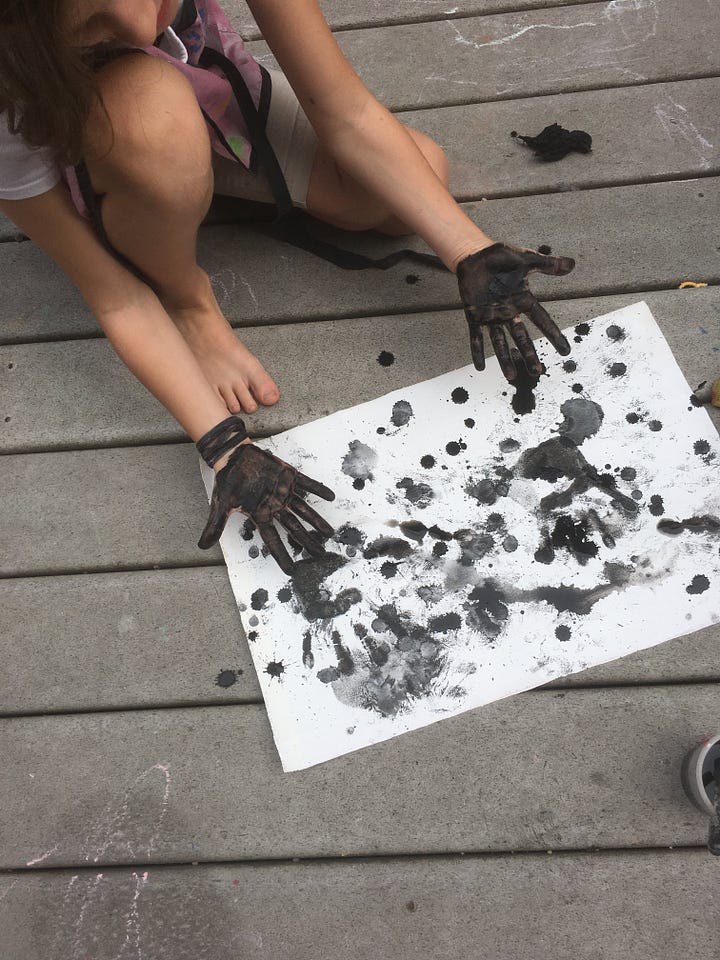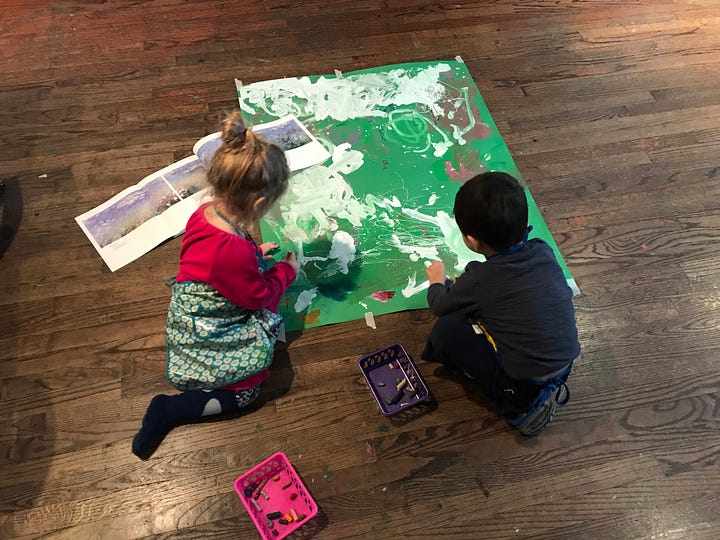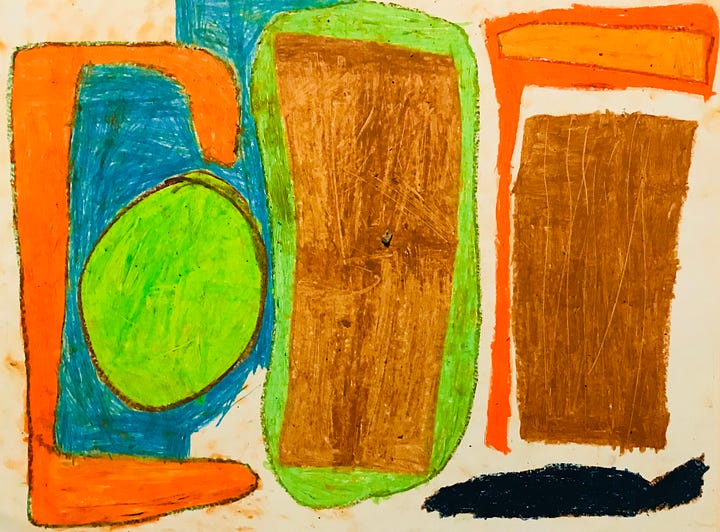What if art could remind young artists of the essential life lessons they learned?
The Painted Cloud Pedagogy...Philosophy...Methodology...Mission...Vision

The Painted Cloud pedagogy centers on our “Consider Community Concepts™” integrated with constructivist arts practices.
Philosophy:
We believe that young artists can understand how to be consciously mindful in the present moment; that they can notice intuition to see and perceive; that they can learn to set conscious intentions and observe interconnectedness. We believe that young artists will come to know that through supporting one another, all will thrive.
More about “Consider Community Concepts'' (CCC):
We encapsulate our philosophy into a series of single-sentence concepts (which we call “Consider Community Concepts™”) to direct intention for teaching artists and young artists. Each CCC starts with the word “Our” which serves as an inclusive entry point. The concepts explore specifics within our philosophy, such as the following::
relationships (CCC example:: Our relationship with information grows by asking questions and listening to answers.)
time (CCC example:: Our connection to the past is present everyday and connects us to the future.)
open-mindedness (CCC example:: Our ability to trust the outcome leads us to see new sights.)
and many, many more.
Each CCC is carefully crafted to encourage open-mindedness, thoughtful collaboration, and authentic investment in our relationships by noticing our inherent similarities. This is what prompts teaching artists AND young artists to zoom out of the studio to infuse real life perspective within the art-making process.
What’s in a name? “Consider Community Concept’...
In every process we embark on, teaching artists and young artists are considering community…and that’s the concept. To develop a CCC, we finish this sentence: “Young artists consider community by ____.” Example: “Young artists consider community by intentionally promoting dialogue as a part of learning new information.” With the sentence now complete, we develop the CCC: “Our relationship with information grows by asking questions and listening to answers.”
More about the Constructivist Learning Theory:
Constructivism is a learning theory built on the work of psychologist Jean Piaget and also includes the work of psychologist Lev Vygotsky. Piaget believed that through play and experience, children build their own knowledge. Vygotsky’s work centers on the idea that learning is a social activity. In sum, constructivism is based on the idea that learners construct knowledge based on experiences, that they are active participants in their journey as learners, and their reflection is key in incorporating new ideas into their prior knowledge.

Methodology:
Our methodology involves viewing every aspect of each art-making session through the lens of the Consider Community Concept. During each session, we employ Constructivism through process-based experiential learning– as well as practicing and mastering vocabulary, skill-building, dialogue, observation, and reflection. By infusing each art-making session with the above elements, we ensure that young artists fully grasp the Consider Community Concept.
We note the list of modifiers for ‘employing Constructivism’ is a long one! What will young artists gain from these methods?
Process-based experiential learning - engaging in hands-on experiences where the process is a prominent component of the work, boosting young artists problem solving skills.
Vocabulary - learning both art vocabulary (i.e. the elements of art) and life vocabulary (words that naturally come up within the art-making process i.e. predict) to be able to clearly describe what one is thinking, and noticing.
Skill-building – developing technical ability and knowledge of tools to further ideas and confidence while working through the artistic process.
Dialogue - practicing conversation and placing value on sharing ideas through developing core skills in asking questions, listening, and responding to others in order to expand communication.
Observation - noticing context, art elements, intentions of artists, etc. to further one’s understanding and also to make decisions within one’s own process.
Reflection - considering the process, vocabulary, skills, dialogue, and observations to begin to understand how one’s experience in art making can be applied in other contexts. In the words of philosopher and educator John Dewey, “We do not learn from experience…we learn from reflecting on experience.”


So how does all of this work in the actual art-making sessions?
Each day teaching artists offer specifically-designed lessons with the objective of centering projects and processes on a Consider Community Concept. Our teaching approach offers a multitude of / numerous possibilities for teaching artists to approach the learning objective. We can shift what media we use from controllable to less controllable. We also can shift what tools we use - tools needing high -focus or less focus. We can likewise shift our approach to be collaborative or independent. We can change the art and life vocabulary words. We can highlight contemporary or historical artist references. We can work ephemerally or on a piece that will live on.
Here’s an example process at The Painted Cloud: This example project centers on the Consider Community Concept, ‘Our ability to trust the outcome leads us to see new sights,’ - To prepare for our young artists, we set the studio with overhead projectors, paper, scissors, look at work from the 1960s experimental artist Otto Piene, and arrange the room layout for collaborative process-based ephemeral work. Throughout the process, we can tie in aspects of the artist reference’s work by integrating vocabulary words (art word: ‘negative space’ + life word: ‘predict’) when participating in observations and inquiries with young artists. As they build skills in scissor work and composition, young artists practice and learn to trust an unknown outcome. As the process continues, we can intentionally focus on the CCC with prompts for reflection (writing and/or drawing) in individual sketchbooks.
In the next session we can still focus on the same CCC, but this time we set the studio with hole punchers, papers with different textures, embellishments (sequins, yarn, glitter), look at the contemporary work of Jamaican-born artist Ebony Patterson, and arrange the room layout for individualized process-based permanent work. Throughout the process, we can again tie in aspects of the artist reference’s work by integrating vocabulary words (art word: ‘mixed media’ + life word: ‘unknown’) when participating in observations and inquiries with young artists. Young artists practice and experience trusting an unknown outcome again, but this time they do so while building fine motor skills through collage. Following the process, we can intentionally start dialogue around the CCC by conducting a group critique.
Echoing the CCC within different experiences invites young artists to learn the CCC in a deeper, more sustainable way. Changing the variables over the course of multiple projects or processes keeps young artists’ engagement high.
What is the point?
The Painted Cloud’s vision is that all young artists will understand and integrate mindfulness, intuition, perception, intention, and community into their lives - in art making and in every other facet of their world.
We're used to hearing phrases like, “Children are our future,” and, “Kids are the Leaders of Tomorrow””. The phrases are straightforward because in reality, somebody has to be the next POTUS, Corporate CEO, parent, teacher, coach, lawyer, entrepreneur, spouse, friend, volunteer, writer, doctor, [fill-in societal role here]. It’s also a reality that life will bring all kinds of ups and downs. As artists and educators we know that there will be differentiated experiences to navigate, even though we can’t predict the future for each young artist. The Painted Cloud devises ways to help young artists gain essential life skills to stay afloat and on course as they navigate life’s waters. When we think about young artists growing up, we want them to have the skills to be grounded – from organizing a chaotic schedule, to intentionally seeking balance while mapping daily logistics. And we want them to be able to connect to their community when a not-so-easy experience comes up in their lives. What if when young artists make art - whether experiencing a process or making something permanent - it could be more than just a mural, a song, a portrait, etc. What if their art could remind young artists of the essential life lessons they learned?
With young artists making art utilizing The Painted Cloud philosophy and with teaching artists working through our methodology, The Painted Cloud’s mission of expanding young artists’ toolboxes of transferable essential life skills becomes a reality.






